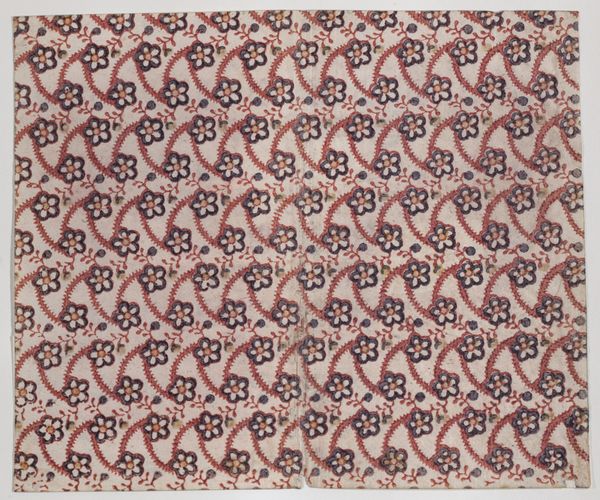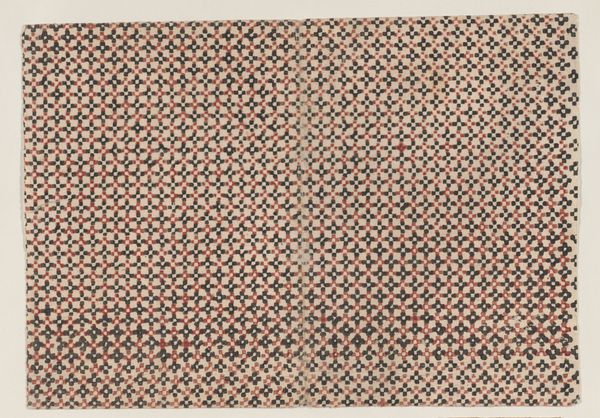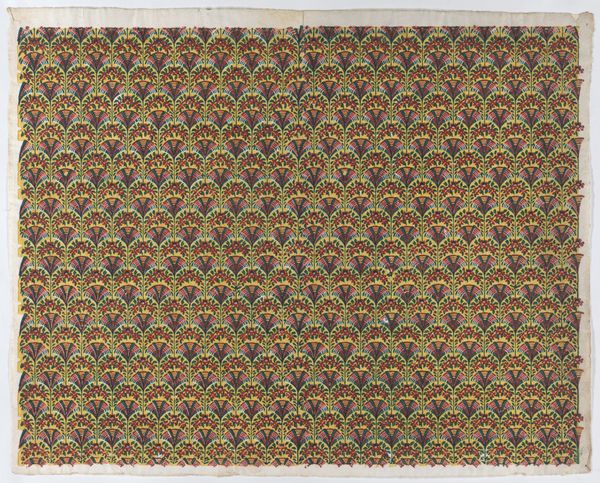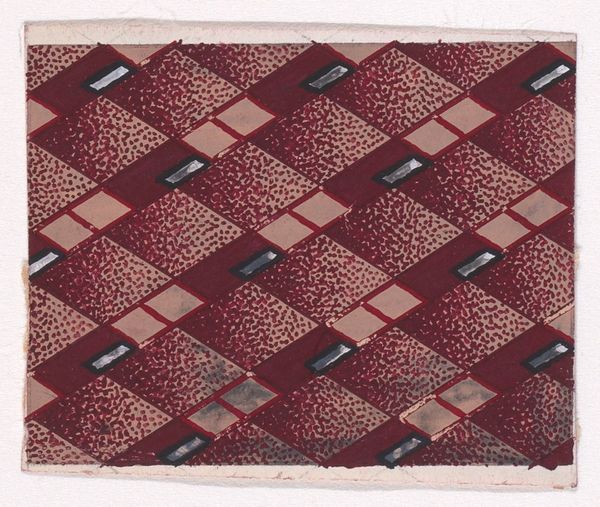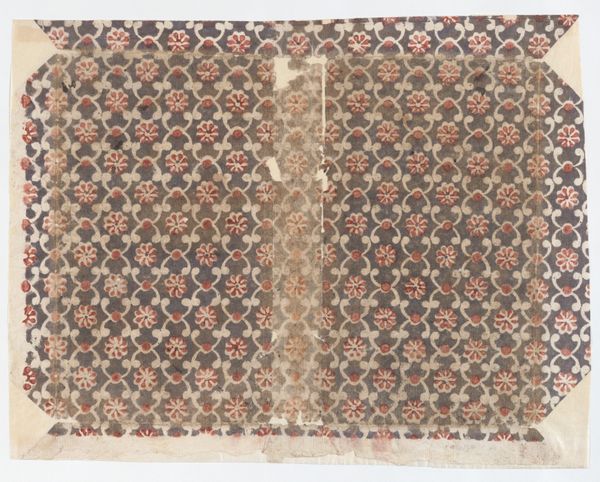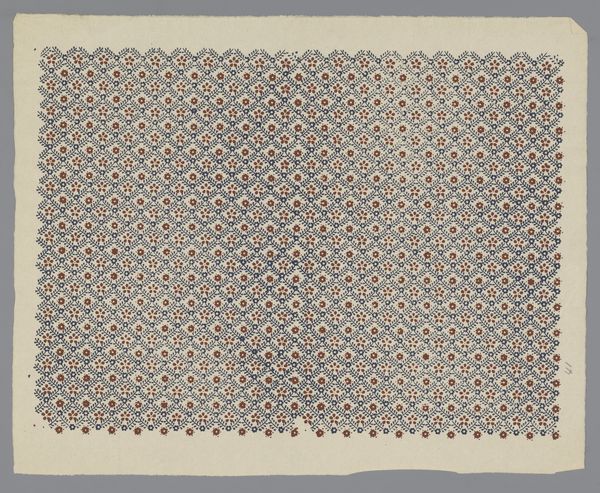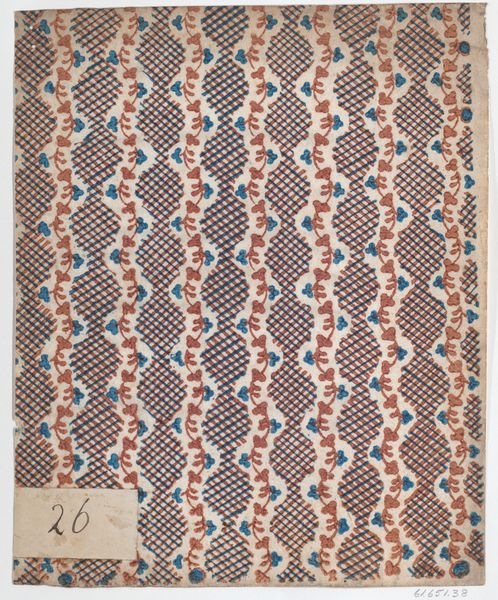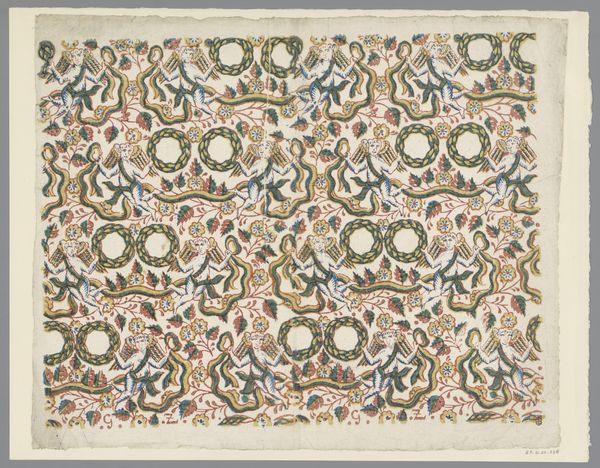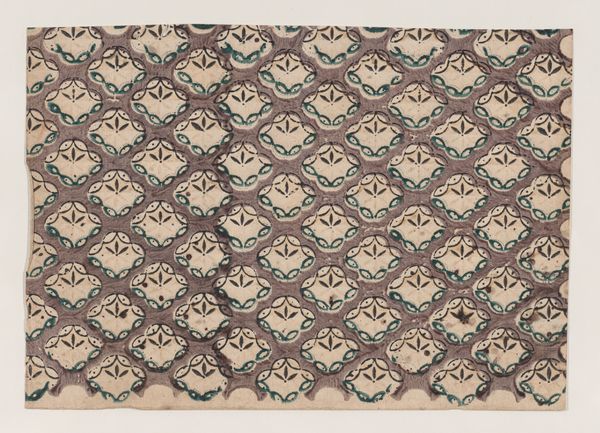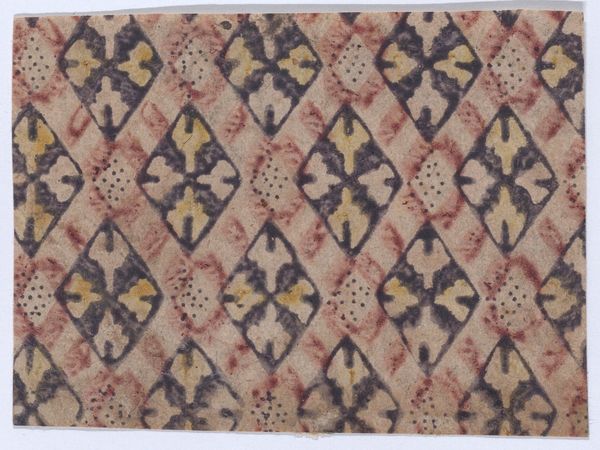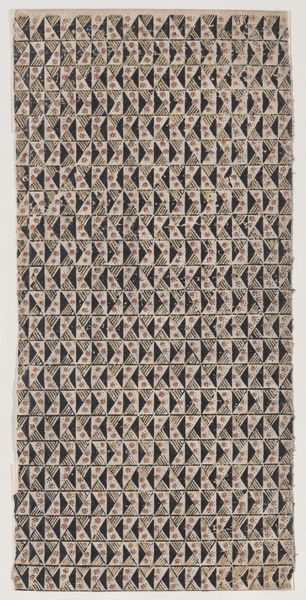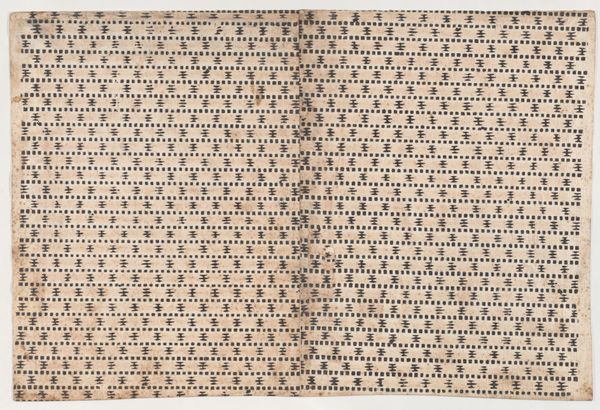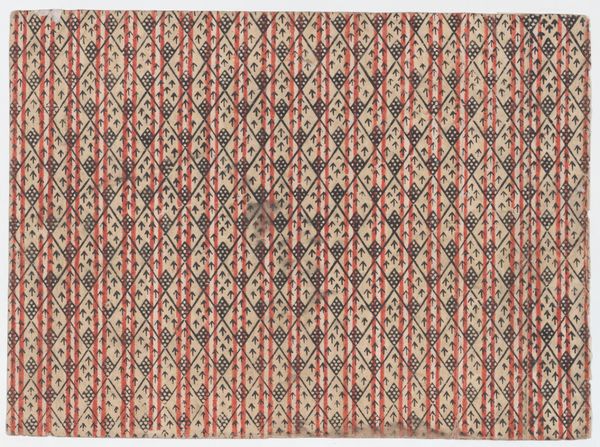
drawing, print, textile
#
drawing
#
natural stone pattern
# print
#
textile
#
geometric pattern
#
abstract pattern
#
organic pattern
#
geometric
#
repetition of pattern
#
vertical pattern
#
pattern repetition
#
textile design
#
decorative-art
#
imprinted textile
#
layered pattern
Dimensions: Sheet: 8 1/8 × 6 13/16 in. (20.7 × 17.3 cm)
Copyright: Public Domain
Curator: Here we have a textile design, "Sheet with overall diamond pattern," created by an anonymous artist sometime between 1800 and 1900. It's currently part of the Metropolitan Museum's collection. Editor: It’s incredibly dense! My first thought is that it evokes a sense of repetition that almost borders on the hypnotic. The colours feel muted, warm but restrained. I'm immediately interested in the materials. Curator: Indeed. The social context of textile production in that era is fascinating. One could imagine this pattern being produced for a very specific market—perhaps even echoing trends from industrial mills finding their way into more folk or artisan practices. The very process suggests that textiles became both commodity and conveyor of taste, mirroring public aesthetics in consumption. Editor: Absolutely. It prompts questions about how the material – likely cotton, if we consider typical textiles of that period – would have been sourced, processed, and then printed. Think about the labour involved in creating the printing blocks alone. This was hardly an individual endeavor. Curator: Exactly, this object speaks volumes about social hierarchies within labor as well as broader trends shaping art. How the elite perceived this artwork contrasts sharply with a garment maker applying it, or perhaps using lower grade resources for popular demands during commercial activities. Editor: I see your point. Beyond social hierarchy, how might this aesthetic interact within a personal dimension or communal celebrations and the potential implications or even imitations of luxury during different levels within a community's traditions and artistry expressions throughout clothing etc.! Fascinating depth lies hidden behind surface patterns… Curator: The politics, then, extend from production and market to its reception – even in our present reading – and offer tangible avenues for socio-economic analyses! These repeating shapes could’ve found meanings related with identity! Editor: True! Understanding the materiality here and methods reveal so many truths concerning society in motion through these beautiful replications, demonstrating intricate connections regarding consumption along social identities manifested tangentially despite mass scales…
Comments
No comments
Be the first to comment and join the conversation on the ultimate creative platform.
